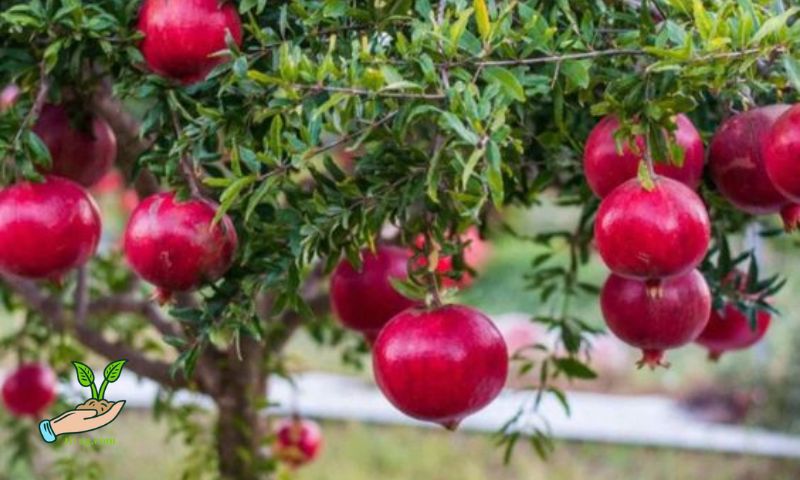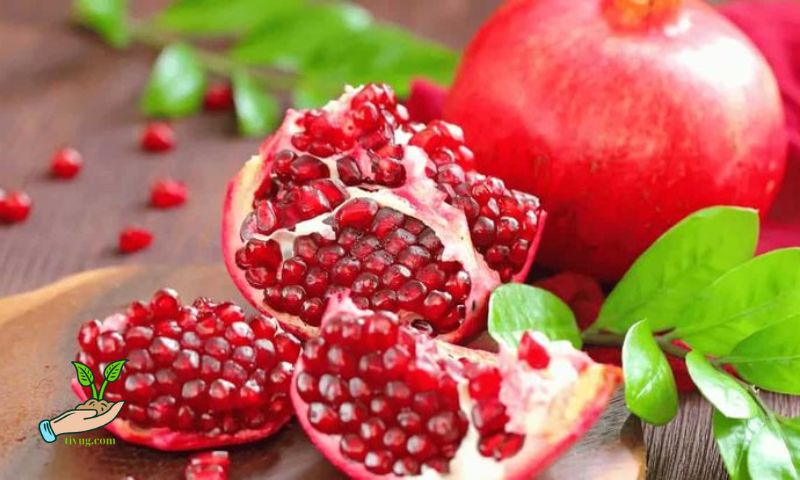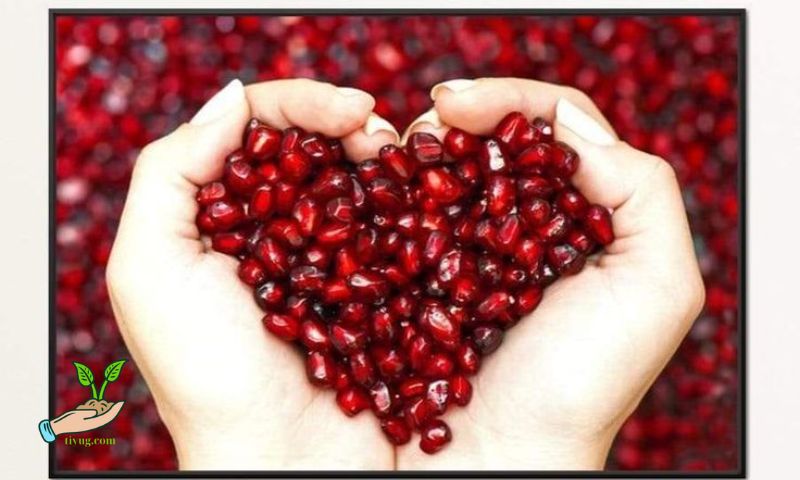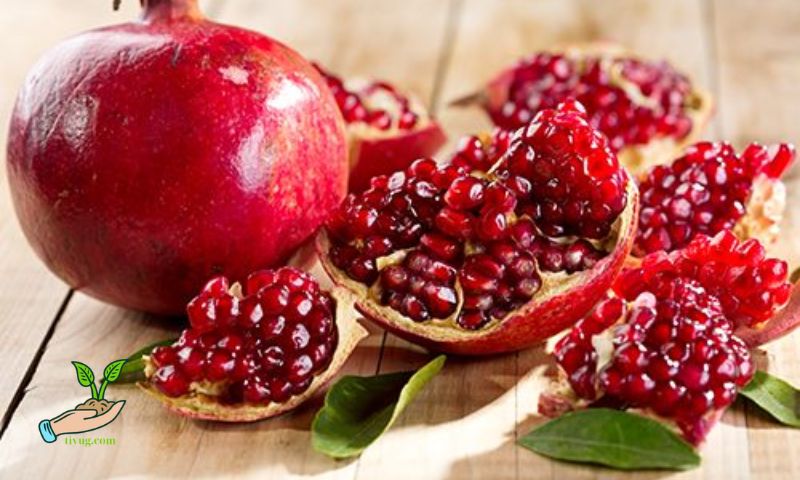Pomegranates, with their jewel-like seeds and sweet-tart flavor, have been cherished for centuries across various cultures. Known for their rich nutritional profile and numerous health benefits, pomegranates hold a special place in both culinary and medicinal traditions worldwide. Among the many varieties, the Indian red pomegranate stands out for its vibrant color, distinctive taste, and unique properties. This article delves into the fascinating world of the Indian red pomegranate, exploring its characteristics, benefits, uses, and significance.
1. What is the Indian Red Pomegranate?

The Indian red pomegranate, scientifically known as Punica granatum, is a fruit variety that is particularly renowned for its deep red arils and robust flavor. Unlike other pomegranate varieties, the Indian red pomegranate is distinguished by its rich, ruby-red seeds that are both visually appealing and packed with a delightful balance of sweetness and tartness. This variety is known for its high juice content and slightly larger seeds compared to other types, making it a favorite among pomegranate enthusiasts.
The Indian red pomegranate is primarily cultivated in the Indian subcontinent, where the climate and soil conditions are ideal for its growth. Its thick, leathery skin protects the precious seeds inside, ensuring they remain juicy and fresh until consumed.
2. Nutritional Benefits
The Indian red pomegranate is a nutritional powerhouse. It is rich in vitamins, minerals, and antioxidants, making it an excellent addition to a healthy diet. Here are some of the key nutritional benefits:
- Antioxidants: Indian red pomegranates are loaded with antioxidants, particularly punicalagin, and anthocyanins, which help combat free radicals and reduce oxidative stress in the body.
- Vitamins: This fruit is an excellent source of vitamins C and K. Vitamin C boosts the immune system and promotes skin health, while vitamin K is essential for blood clotting and bone health.
- Minerals: Pomegranates provide essential minerals such as potassium, which is crucial for heart health, and folate, which supports cell function and tissue growth.
- Fiber: The seeds (arils) of the Indian red pomegranate are rich in dietary fiber, aiding digestion and promoting a healthy gut.
Regular consumption of Indian red pomegranate can contribute to overall health and well-being, thanks to its rich nutrient profile.
3. Cultivation and Harvesting

The cultivation of Indian red pomegranates requires specific climatic conditions to thrive. These pomegranates are predominantly grown in regions of India with a warm, arid climate. Maharashtra, Gujarat, Karnataka, and Andhra Pradesh are some of the key states where this fruit is extensively cultivated.
- Growing Conditions: Indian red pomegranates thrive in well-drained soil with a pH level between 5.5 and 7.5. They require ample sunlight and moderate watering to produce high-quality fruit.
- Harvesting Season: The harvesting season for Indian red pomegranates typically begins in September and can extend until February. The fruits are carefully picked when they reach full maturity, indicated by their vibrant color and slightly soft texture.
The harvesting process involves handpicking the fruits to avoid damaging the delicate seeds inside. Once harvested, the pomegranates are sorted, cleaned, and prepared for distribution.
4. Culinary Uses
The Indian red pomegranate is a versatile fruit that can be used in various culinary applications. Its sweet-tart flavor and vibrant color make it a popular ingredient in both traditional and modern recipes.
- Indian Cuisine: In Indian cuisine, the seeds and juice of the Indian red pomegranate are used in a variety of dishes. The seeds, known as arils, are often sprinkled over salads, desserts, and savory dishes to add a burst of flavor and color. Pomegranate juice is also a popular ingredient in marinades, sauces, and beverages.
- Recipes: Some popular recipes featuring Indian red pomegranate include pomegranate raita (yogurt-based side dish), anardana chutney (spiced pomegranate seed chutney), and pomegranate molasses, which is used in both sweet and savory dishes.
- Beverages and Desserts: The refreshing juice of the Indian red pomegranate is often used in cocktails, mocktails, and smoothies. It also serves as a beautiful garnish for desserts like panna cotta, cheesecake, and fruit salads.
5. Medicinal and Health Uses

The Indian red pomegranate has been valued for its medicinal properties for centuries, particularly in traditional Ayurvedic medicine. Modern research also supports many of these health claims.
- Ayurvedic Uses: In Ayurveda, pomegranates are used to balance the doshas (body energies) and are believed to have cooling and detoxifying properties. They are often prescribed to improve digestion, boost heart health, and enhance skin complexion.
- Modern Health Benefits: Scientific studies have shown that Indian red pomegranates can have several health benefits:
- Heart Health: The antioxidants in pomegranates help reduce cholesterol levels and lower blood pressure, thereby promoting heart health.
- Anti-Inflammatory Properties: Pomegranate extracts have been found to reduce inflammation in the body, which can help in managing conditions like arthritis.
- Cancer Prevention: Some studies suggest that the antioxidants in pomegranates may help prevent certain types of cancer by inhibiting the growth of cancer cells.
6. Buying and Storing Tips
To enjoy the best quality Indian red pomegranates, it’s important to know how to select and store them properly.
- Selecting Pomegranates: Look for fruits that are heavy for their size, as this indicates a high juice content. The skin should be smooth and unblemished, with a rich, vibrant color. Avoid pomegranates with cracks or soft spots.
- Storage Tips: Pomegranates can be stored at room temperature for a few days or in the refrigerator for up to two weeks. Once opened, the seeds should be stored in an airtight container in the refrigerator and consumed within a few days.
- Shelf Life and Preservation: To extend their shelf life, pomegranate seeds can be frozen. Spread the seeds on a baking sheet and freeze them before transferring them to a freezer-safe container.
7. Economic and Cultural Significance
The Indian red pomegranate is not only a nutritious fruit but also holds significant economic and cultural value in India.
- Economic Impact: Pomegranate farming is a vital source of income for many farmers in India. The fruit’s high demand, both domestically and internationally, contributes significantly to the agricultural economy.
- Cultural Significance: Pomegranates are often associated with prosperity, fertility, and abundance in Indian culture. They are used in religious rituals and festivals and are also considered a symbol of good luck and auspiciousness.
- Export and International Demand: The unique qualities of the Indian red pomegranate have made it popular in international markets. India exports large quantities of this fruit to countries in the Middle East, Europe, and North America.
8. Environmental Impact
The cultivation of Indian red pomegranates has an environmental impact, but efforts are being made to promote sustainable farming practices.
- Sustainable Farming Practices: Farmers are increasingly adopting sustainable practices such as organic farming, integrated pest management, and efficient water usage to reduce the environmental footprint of pomegranate cultivation.
- Impact on Local Ecosystems: Pomegranate orchards can support local ecosystems by providing habitats for various species of birds and insects. However, it is essential to manage these orchards responsibly to prevent negative impacts on biodiversity.
- Organic and Eco-Friendly Initiatives: There is a growing trend towards organic pomegranate farming in India. Organic farming not only produces healthier fruit but also protects the environment by avoiding harmful chemicals and pesticides.
Conclusion
The Indian red pomegranate is a remarkable fruit that offers a multitude of benefits. From its rich nutritional profile and versatile culinary uses to its significant economic and cultural impact, this vibrant fruit is a true gem of India. Incorporating Indian red pomegranates into your diet can provide numerous health benefits, while also allowing you to enjoy their unique flavor and beauty. As more people become aware of the advantages of this fruit, its popularity is sure to continue growing both in India and around the world.

